Exploring the Peruvian Amazon Rainforest: A wildlife adventure
- Through My Eyes
- Jul 21, 2024
- 5 min read
Stepping into the heart of the Peruvian Amazon Rainforest was a journey that exceeded all expectations. From the moment I touched down in Puerto Maldonado, I knew I was about to embark on an adventure unlike any other—a chance to get to know and experience one of the world's most biodiverse regions.
After a quick stop at Posada Amazonas, we boarded a bus that took us on a bumpy, off-road ride towards the Tambopata River. There, a boat was waiting to take us deeper into the jungle to our lodge, Posada Amazonas. Words cannot describe the mix of emotions I felt as I took in the surrounding scenery and observed the wildlife we encountered along the way: turtles, capybaras, birds, and even a baby caiman! These moments were incredibly surreal and left me completely amazed.
The Amazon Rainforest spans an astonishing 2.3 million square miles across South America, renowned for its sheer scale and biodiversity. This region, often called the "lungs of the Earth," plays a crucial role in global climate regulation, covering about 40 percent of Brazil’s total area and bordered by the Guiana Highlands to the north, the Andes Mountains to the west, the Brazilian central plateau to the south, and the Atlantic Ocean to the east. Encompassing eight rapidly developing countries—Brazil, Bolivia, Peru, Ecuador, Colombia, Venezuela, Guyana, Suriname—and French Guiana, an overseas territory of France, the Amazon biome contains approximately one in 10 known species on Earth, 1.4 billion acres of dense forests, and 20% of the world's liquid freshwater within its 2.7 million square miles basin, equating to about 40% of South America. The health of the Amazon is linked to the planet’s well-being, as its rainforests, holding an estimated 150-200 billion tons of carbon, help stabilize both local and global climates.
One of the biggest threats to the Amazon is the illegal chopping of trees that are more than 500 years old. Among these, the shihuahuaco has become one of the most endangered. This imposing tree grows slowly over 700 years, reaching heights of 50 meters with a trunk diameter of 1 meter. Some researchers warn that if the logging pressure continues, the shihuahuaco could soon go extinct.
On the other hand, the castaña (Brazil nuts) nut represents a more sustainable rainforest product. Protected old-growth rainforests host castaña trees, which drop round shells filled with nuts that are gathered from the forest floor. Due to their unique reproductive system, which requires large bees to transport pollen between trees, Brazil nuts only thrive in natural forests. Native to the Amazon basin, these trees are some of the largest in the rainforest, growing up to 50 meters tall and living for several hundred years.
After arriving at our lodge and taking a short break, we walked for around half an hour to ascend a 42-meter-tall canopy tower on our first evening. Needless to say, the view it offered was nothing short of breathtaking. The Amazon rainforest, seen from above during sunset, looked like a painting, with the sky in shades of orange and red over the Peruvian jungle. While birds are more active during the morning, we still saw a few macaws flying from afar, but the most amazing sight was the monkeys at the top of the trees. It was magical.
The following morning greeted us with an early rise to Tres Chimbadas Oxbow Lake, a notable experience offered by Posada Amazonas. After a quick boat trip from the lodge on the Tambopata River, we hiked a short distance inland to the lake, where we enjoyed a catamaran ride to spot wildlife. These lakes, formed when a river bend gets cut off from the main channel, are among the most important and unique habitats in the Amazon. The lake’s diversity and fish-filled waters provide plenty of opportunities to see various animals.
Some travellers, like myself, might get the chance to spot the Hoatzin, a bizarre looking bird, with red eyes and spiky feathers on its head, giving it a prehistoric look. Other animals one may spot include squirrel monkeys, playful giant river otters in the water, capybaras, bats, colourful macaws, and other birds flying from tree to tree, and of course, caimans. These oxbow lakes are rich with wildlife due to their calm waters and plentiful food. I was thrilled to see a Black Caiman, one of the largest predators in the Amazon. Surprisingly, I learned that the piranhas and the electric eel in the lake are considered even more dangerous!
Oxbow lakes play a crucial role in the park’s floodplain ecosystem. During the rainy season, overflowing rivers bring nutrients and sediment into the lakes, creating a rich breeding ground for fish and other aquatic animals, which in turn become food for larger animals like otters, caimans, and giant river otters. Visiting the oxbow lakes is an excellent way to learn about the complex interplay within this unique ecosystem. By observing the plants and animals that inhabit these lakes, you definitely gain a deeper understanding of the sophisticated relationships that sustain this remarkable environment.
During my adventure, I had the chance to see so many capybaras, including the cutest family, which was an absolute delight. Capybaras are short-haired, brownish rodents with blunt noses, short legs, small ears, and almost no tail. They are shy animals that associate in groups along the banks of lakes and rivers. Capybaras typically feed in the morning and evening, spending most of the day resting under cover along the banks. As vegetarians, they sometimes become pests in cultivated areas by eating melons, grain, and squash. They are adept swimmers and divers, often entering the water to elude predators such as jaguars and anacondas.
In the afternoon, we set out on a tranquil sunset boat trip along the Tambopata River, enjoying the serene beauty of the jungle as a glorious sunset painted the sky. It was an idyllic experience, marking the close of another unforgettable day in the Amazon. We were fortunate to enjoy this outing during a full moon, which made the scenery even more spectacular.
As our time at Posada Amazonas came to an end, we sadly said goodbye to this amazing place full of diverse wildlife. On our way back to Puerto Maldonado, we were amazed to see in a closer range the majestic macaws as they came near our boat, giving me the best farewell I could have wished for.
Reflecting on my adventure in the Peruvian Amazon, I am deeply moved by the profound impact of this unique ecosystem. It's not only the incredible wildlife encounters and breathtaking landscapes that stand out, but also the realization of how interconnected every aspect of this delicate balance of nature is. The Amazon Rainforest is so much more than just a destination; it is a critical reminder of the urgent need for conservation efforts. My journey into the Peruvian Amazon will forever hold a special place in my heart. It was a transformative journey of discovery in every aspect.



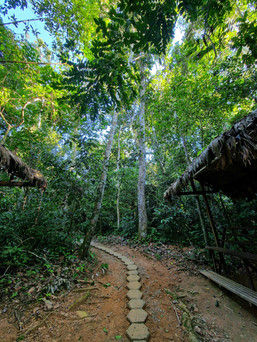





































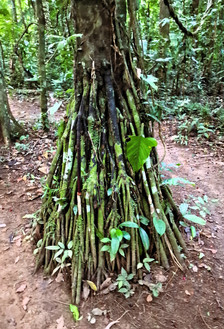





















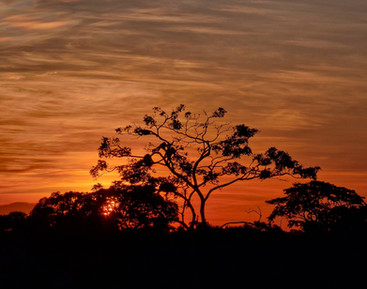























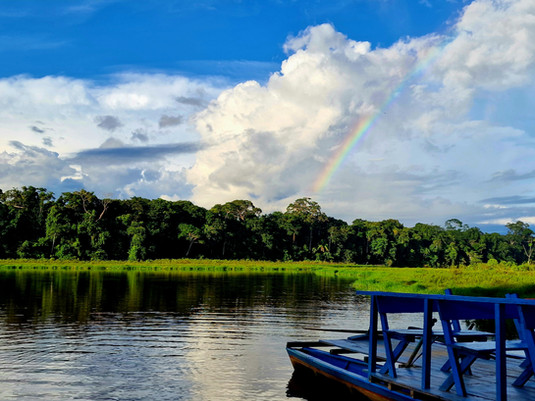































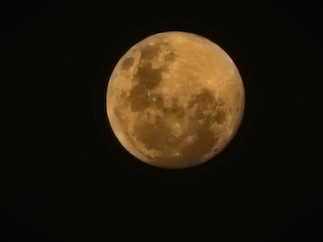






Comments